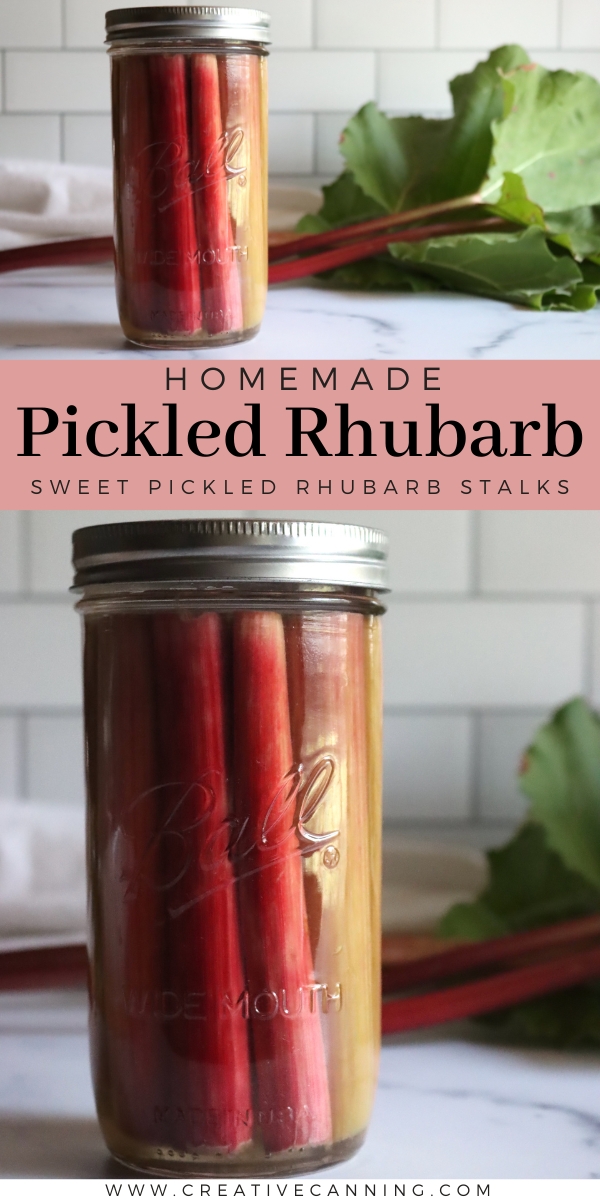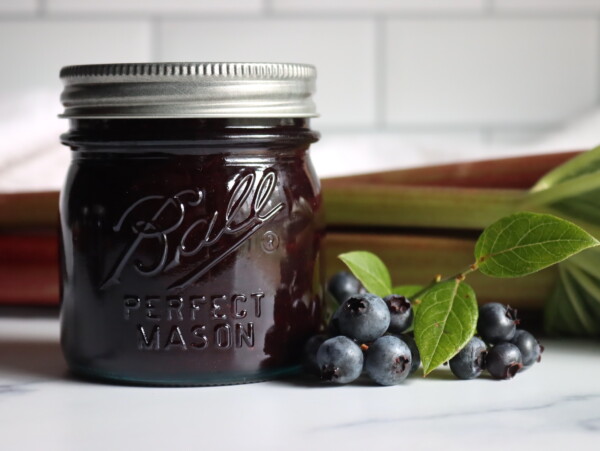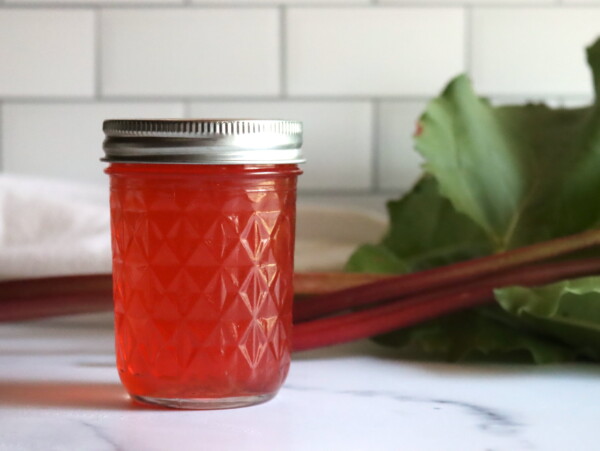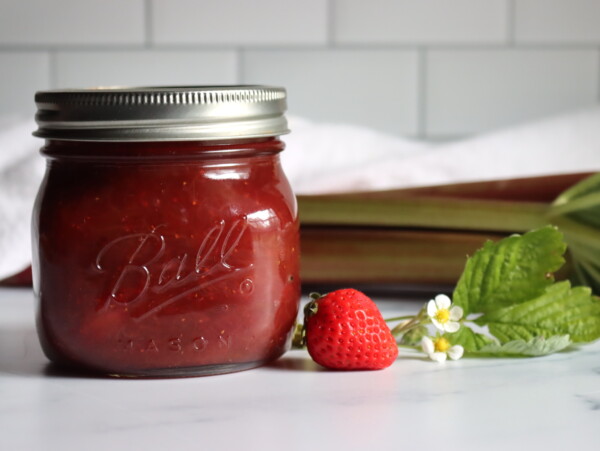This post may contain affiliate links. Please see our disclosure policy.
Pickled rhubarb is a delicious and unique way to enjoy this tangy vegetable. This pickling method not only preserves the rhubarb, but also enhances its flavor, creating a sweet and sour taste that’s sure to delight your taste buds.
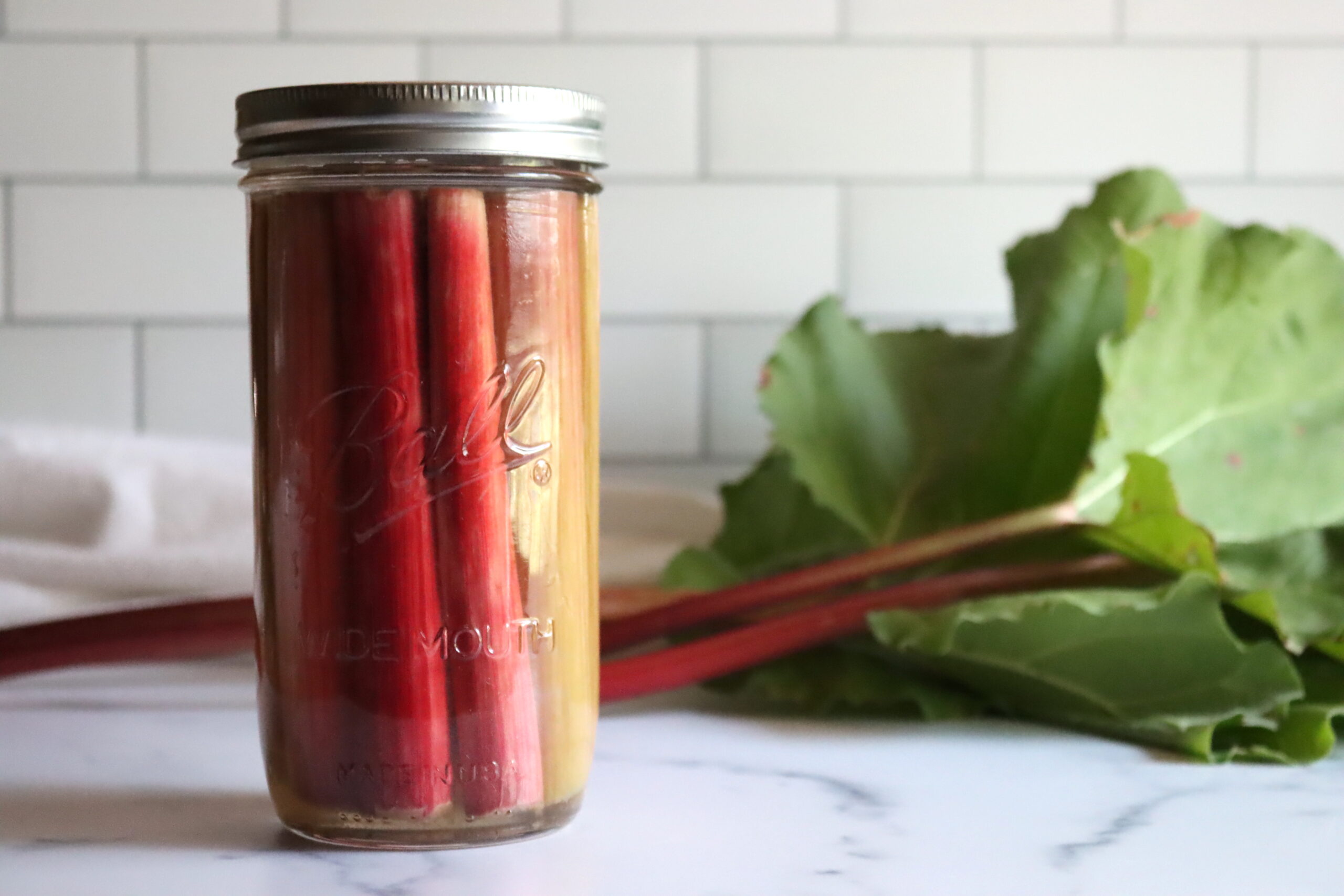
Rhubarb, which is often mistaken for a fruit, is actually a vegetable that’s high in fiber, vitamins, and minerals. It grows in stalks, much like celery, and has a tart taste that can sometimes be challenging to work with. However, when pickled, rhubarb becomes a versatile ingredient that can be used in a variety of dishes, from salads to sandwiches to cocktails – and so much more.
Whether you pick it straight from your garden or purchase it at the farmers market, canning pickled rhubarb is a surefire way to preserve this tangy vegetable and enjoy its benefits all year round.
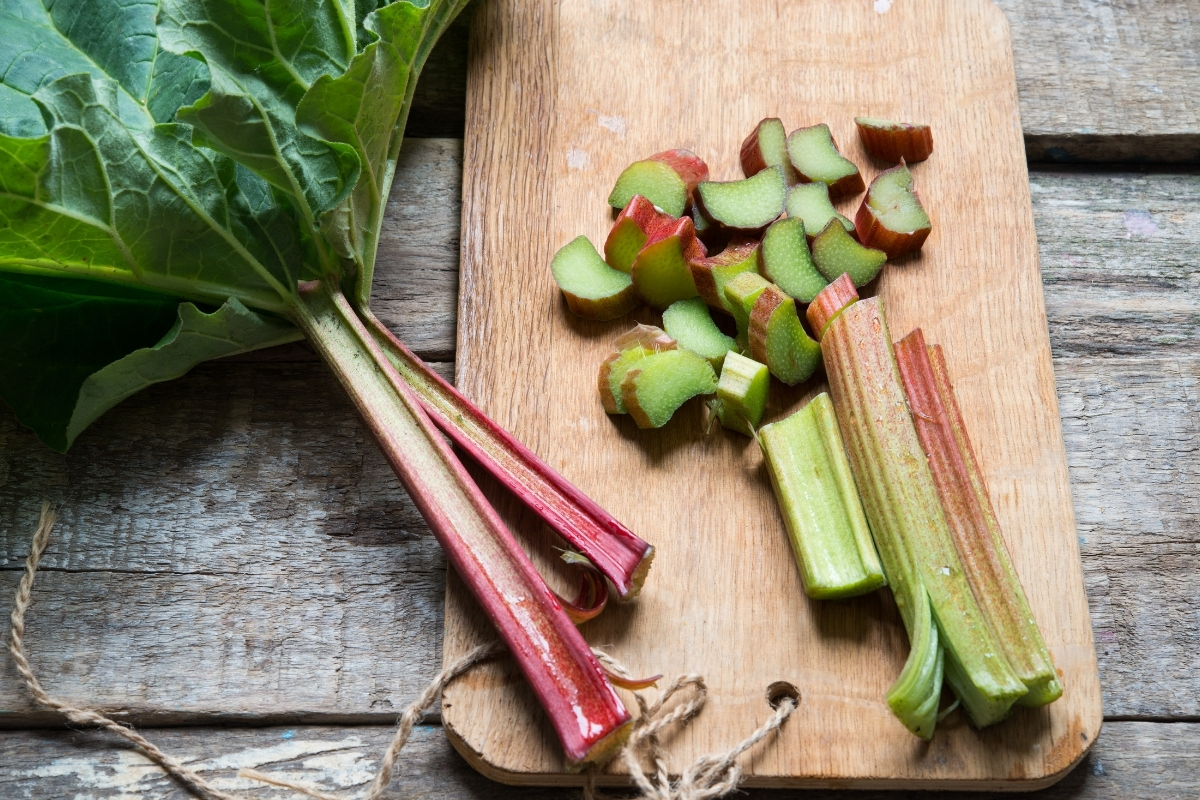
Ingredients for Pickled Rhubarb
This is a is a safe, tested canning recipe adapted from The Complete Book of Pickling by Jennifer MacKenzie. Do not reduce the amount of vinegar used in this recipe. You can, however, lower or emit either the sugar or salt. You can also change the spices to suit your tastes.
The ingredients for canning pickled rhubarb are quite simple. To make a canner batch of four pints (500 mL), you’ll need the following:
- 2 lbs rhubarb stalks (1 kg) with the leaves removed
- Ice water
- 4 thin slices of ginger root
- 4 one-inch (2.5 cm) pieces of cinnamon stick
- 2 whole cloves
- 3 ¾ cups granulated sugar (925 mL)
- 1 tsp canning or pickling salt (5 mL)
- 3 cups apple cider vinegar (750 mL)
- 1 ⅓ cups water (325 mL)
You will need about thirty 12″ (1 kg) stalks of rhubarb. Each one should be no thicker than ½” or 1 cm in diameter, ideally, as thicker stalks are often tough and stringy.
For this recipe, you can leave the stalks whole, or slice them into small pieces.
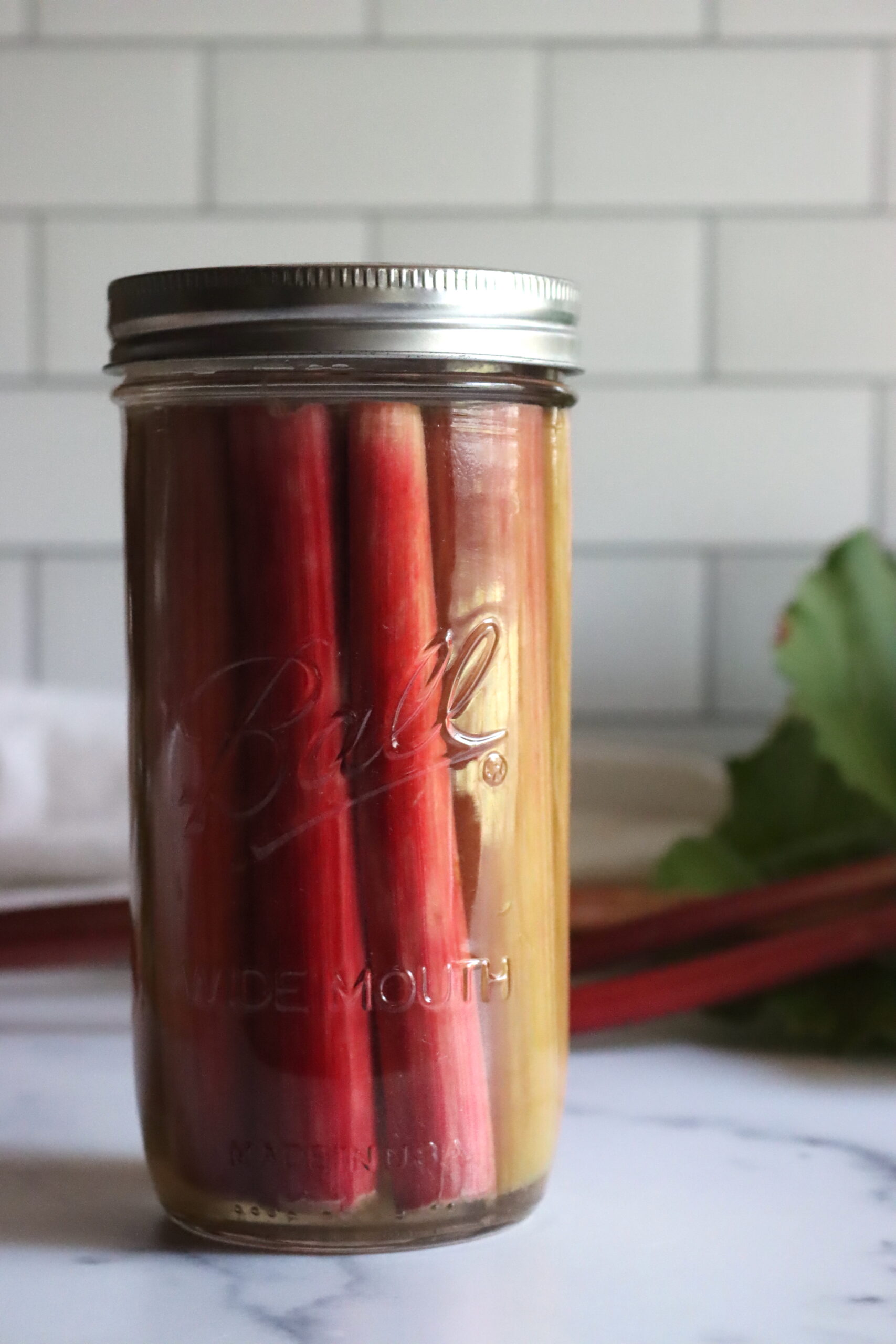
How to Make Pickled Rhubarb
First, trim the ends off the rhubarb and cut them into four-inch (10 cm) pieces. Make sure that the length of the rhubarb will fit easily into your jars while still leaving one inch (2.5 cm) of headspace.
Next, you’ll want to soak the rhubarb in ice water for at least 30 minutes (up to an hour) to firm it up. While the rhubarb is soaking, you can prepare your canner, jars, and lids.
Once your rhubarb has soaked, drain it in a colander and set it aside.
In a pot, combine ginger, cinnamon, sugar, cloves, salt, water, and vinegar. Bring it all to a boil over medium heat, stirring occasionally until the salt and sugar are dissolved. Boil it for a minute, then reduce the heat and keep the liquid hot.
Working with one jar at a time, place a cinnamon stick and a slice of ginger into a hot jar, and discard the cloves. Pack the rhubarb into the jar, leaving some room for the liquid.
Pour in the hot pickling liquid, leaving half an inch (about 1 cm) of headspace. Remove any air bubbles, and adjust the headspace as needed by adding more hot pickling liquid. Clean the rims and place the hot lids onto the jars. Screw the bands down until they’re fingertip tight.
You’re almost there! Next, you’ll put the jars into the canner and return it to a boil. Process the jars for 10 minutes (adjusting for altitude), then turn off the heat. Remove the canner lid and let the jars sit in the water for five minutes. Carefully remove the jars from the canner and place them on a towel-lined surface. Let them sit for 24 hours.
After that time has passed, it’s time to check the lids. Any jars that didn’t seal properly will need to be refrigerated and used within two months.
Voila! You now have delicious pickled rhubarb that will add some zip to salads, sandwiches, and more. Enjoy!
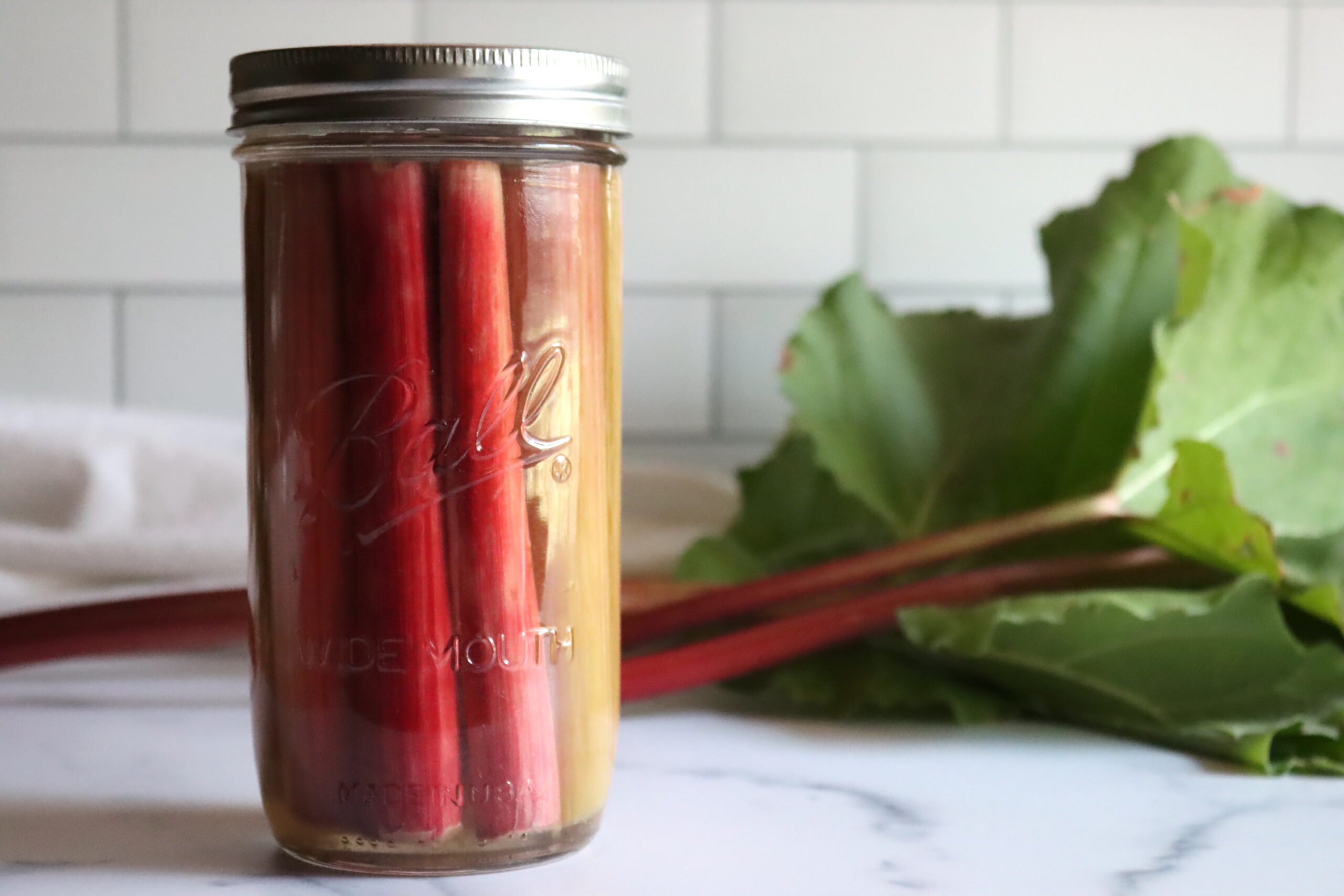
Canning Altitude Adjustments
Water boils at a lower temperature at higher altitudes, so jars need to be processed a bit longer as you go up in elevation. Here are the altitude adjustments for canning pickled rhubarb:
- For 0 to 1,000 Feet in Elevation – Process pint jars for 10 minutes, and quart jars for 15 minutes.
- For 1,001 to 6,000 Feet in Elevation – Process pint jars for 15 minutes, and quart jars for 20 minutes.
- Above 6,001 Feet in Elevation – Process pint jars for 20 minutes, and quart jars for 25 minutes.
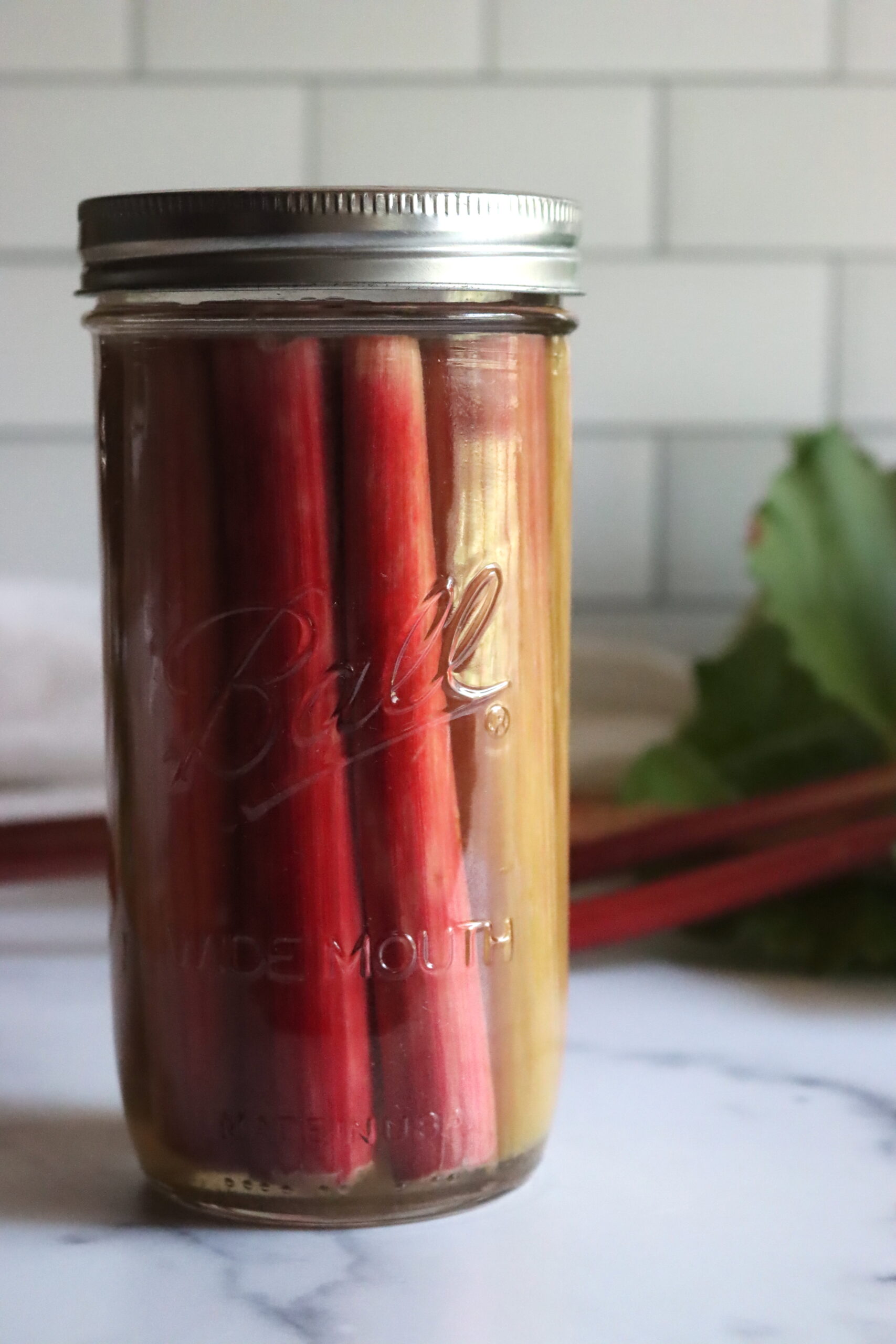
Serving Pickled Rhubarb
When it comes to serving pickled rhubarb, there are a few things to keep in mind. First, it’s important to note that this is a heat-and-eat dish, which means that you don’t need to add any ingredients when you’re ready to serve it. Simply take it out of the jar, let it come to room temperature, and dig in!
So, what should you serve it with? Pickled rhubarb is actually quite versatile, so you can pair it with a variety of different foods, depending on your tastes. One popular option is to serve it on an appetizer platter with other savory and sweet pickles. This can be a great way to showcase the different flavors and textures of different pickling techniques.
Some other ideas for serving pickled rhubarb include using it as a topping for grilled meats or vegetables, incorporating it into sandwiches or wraps, or even adding it to salads for an unexpected burst of flavor.
And if you’re feeling really adventurous, you could even try using pickled rhubarb in place of traditional fruit preserves in a range of sweet applications, from muffins to cheesecake.

Sweet Pickled Rhubarb
Equipment
Ingredients
- 2 lbs rhubarb stalks, 1 kg with the leaves removed
- Ice water
- 4 thin slices ginger root
- 4 inch pieces cinnamon stick, 2.5 cm pieces of cinnamon stick
- 2 whole cloves
- 3 ¾ cups granulated sugar, 925 mL
- 1 tsp canning or pickling salt, 5 mL
- 3 cups apple cider vinegar, 750 mL
- 1 ⅓ cups water, 325 mL
Instructions
- Trim the ends off the rhubarb and cut them into four-inch (10 cm) pieces.
- Soak the rhubarb in ice water for at least 30 minutes (up to an hour) to soften it up.
- Prepare your canner, jars, and lids.
- Drain the rhubarb in a colander and set it aside.
- In a pot, combine ginger, cinnamon, sugar, cloves, salt, water, and vinegar.
- Bring it all to a boil over medium heat, stirring occasionally until the salt and sugar are dissolved. Boil it for a minute, then reduce the heat and keep the liquid hot.
- Working with one jar at a time, place a cinnamon stick and a slice of ginger into a hot jar, and discard the cloves.
- Pack the rhubarb into the jar, leaving some room for the liquid.
- Pour in the hot pickling liquid, leaving half an inch (about 1 cm) of headspace.
- Remove any air bubbles, and adjust the headspace as needed by adding more hot pickling liquid.
- Clean the rims and place the hot lids onto the jars. Screw the bands down until they’re fingertip tight.
- Load the jars into the canner and return it to a boil.
- Process the jars for ten minutes, then turn off the heat. Remove the canner lid and let the jars sit in the water for five minutes.
- Carefully remove the jars from the canner and place them on a towel-lined surface. Let them sit for 24 hours.
- Check the seals, label, and store.
Notes
Canning Altitude Adjustments
Water boils at a lower temperature at higher altitudes, so jars need to be processed a bit longer as you go up in elevation. Here are the altitude adjustments for canning pickled rhubarb:- For 0 to 1,000 Feet in Elevation – Process pint jars for 10 minutes, and quart jars for 15 minutes.
- For 1,001 to 6,000 Feet in Elevation – Process pint jars for 15 minutes, and quart jars for 20 minutes.
- Above 6,001 Feet in Elevation – Process pint jars for 20 minutes, and quart jars for 25 minutes.
Nutrition
Nutrition information is automatically calculated, so should only be used as an approximation.
Pickling Recipes
Looking for more simple pickling recipes?
- Pickled Corn Salad
- Pickled Three Bean Salad
- Pickled Green Tomatoes
- Pickled Green Beans (Dilly Beans)
- Pickled Jalapenos
- Pickled Fiddleheads
